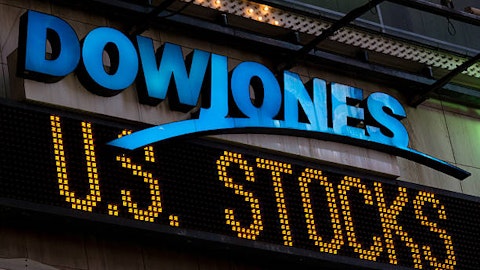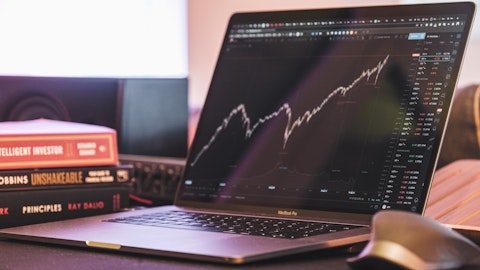Mike Roman: Yeah. Andy, back to Monish’s comments, we’re seeing kind of mixed performance in the industrial markets. We see strengths as we said, as we came through the quarter in areas like electrical markets and automotive aftermarket. We were seeing some moderation in specific end market segments. And the comment about industrial adhesives and tapes and closure and masking is some of that is related to the electronics slowdown. So that’s part of that impact. It’s also impacted by China. So China has really got a couple of things that are part of the slowdown. One of them is COVID and the interruption in the markets in industrial production and GDP. It’s also reflecting the importance of electronics to that market into our business there in China.
And we see that continuing those dynamics that we saw in Q4 continuing into the start of the New Year. We saw some moderation in specific segments of industrial. We saw specialty vehicle construction markets. We saw some moderation coming through the end of the quarter. We’re off to a slow start as we start the year. There’s a couple of areas of destocking really related to those end market segments where we’ve seen nothing more broad-based than that. We had strong performance across some of those other end markets in industrial. But €“ we’re starting to see some moderating and, like I said, January is off to a slower start for industrial.
Andrew Kaplowitz: Mike, that’s helpful. And then maybe could you give us a little more color regarding price versus cost for 2023. You mentioned the low single-digit price improvement you’re seeing. You also mentioned supply chains are healing. Are you generally seeing pricing hold up for you despite some of this demand weakness across the portfolio? And then versus raw material and energy related headwinds, does that price versus cost increasing€“ getting increasingly green as you go throughout the year?
Monish Patolawala: Yeah. So I think two different points in there, Andy. As you correctly pointed out, the carryover impact on what we have assumed right now in the guide is two pieces on the selling price. We said approximately 2% — at the same time, the carryover impact of both raw materials and energy inflation is approximately $150 million to $250 million. So when you just do that equation together, right now, it’s positive. I think what we’ll see as we go through is how do supply chains heal and how fast can we get the cost out. But at the same time, it will take a little bit of time as we sell through our higher cost goods to our inventory, you’re going to see some of that moderate, but it will start showing up as the year progresses.
The key question for us that we have to think through and that’s what we are thinking through is, as deflation starts showing up in the economy, the discussion that’s going to come up is the elasticity of price across not just our company but across all companies. And what we have found over time, Andy, as you know, 3M so well that our innovation ultimately drives the value that we add for our customers. And historically, we have been able to have a good price cost equation, because of the value that we add for customers. So, seeing what we’ll see in 2023 will depend on supply chains and what plays out in the long run, we are very confident that the price/cost equation continues to be green just because of the value we add to our customers.
Andrew Kaplowitz: Appreciate the color, Monish.
Operator: Our next question comes from Andrew Obin with Bank of America. You may proceed with your question.
Andrew Obin: Yes. Good morning.




